 Image search results - "ika" Image search results - "ika" |

Occupying a huge plot of land in the center of the city, Kanazawa Castle has undergone extensive renovations and reconstruction. The main castle buildings are now magnificently restored.
|
|

Kenrokuen is one of Japan's three most famous gardens (besides Korakuen in Okayama and Kairakuen in Mito, Ibaraki). The garden was originally the castle garden for Kanazawa Castle. Katsurazaka Entrance to Kenrokuen Garden 桂坂口
|
|

Map of Kanazawa Castle Park and Kenrokuen Garden
|
|

JR Tachikawa Station
|
|

Ryogoku Kokugikan sumo arena as seen from Ryogoku Station
|
|

The Kokugikan as seen from JR Ryogoku Station platform.
|
|
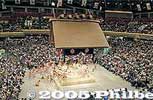
More people than the real tournamentAbout 8,000 people took time out from their Golden Week holidays to see this official sumo practice of all sumo stables.
|
|

Kanazawa Castle was the base for the Kaga Domain (Ishikawa and Toyama Prefectures) ruled by the Maeda clan 1583–1871 starting with Maeda Toshiie.
|
|

Ninomaru Northern Stone wall along a moat. 二の丸北面石垣
|
|

Kenrokuen is classified as a "kaiyu-shiki teien" (回遊式庭園) or "circular-strolling Japanese garden." It's a common and classic Japanese garden design where you simply walk around the garden, usually around a central pond.
|
|

JR Tachikawa Station entrance
|
|

Crowd outside the Kokugikan await their favorite wrestlers.
|
|
|
|
|

Shinmaru Park 新丸広場
|
|

Kasumigaike Pond and the famous Kotoji-toro stone lantern. The lantern is shaped like a bridge that supports a string on the koto instrument. 霞ヶ池 徽軫灯籠
|
|
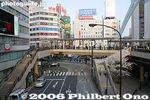
JR Tachikawa Station walkways
|
|

Crowd enters the Kokugikan for Musashimaru's retirement ceremony on Oct. 2, 2004.
|
|

Yokozuna Deliberation Council membersIn the middle is Kitanoumi.
|
|
|

Dobashi-mon Gate stone walls 土橋門石垣
|
|

Famous Kotoji-toro stone lantern 徽軫灯籠
|
|
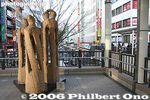
Walkway sculpture
|
|

Passing out programs
|
|
|
|

Highway in front of the castle.
|
|

Dobashi-mon Gate stone wall 土橋門石垣
|
|

The strolling path is not a perfect circle, but you start and finish at the same point. The strolling path is lined with Japanese pines, flowering plants, maples, etc.
|
|
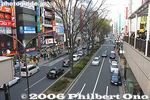
Street
|
|

Musashimaru at the entrance
|
|

Sumo elders in the front row
|
|

Outer castle wall
|
|

Dobashi-mon Gate stone wall. Notice the hexagonal stones. 土橋門石垣
|
|
|

Sidewalk
|
|

Musashimaru greets the crowd
|
|

Former yokozuna Taiho, Takanosato, Kotozakura, and Wakanohana watch intently.
|
|
|

Gate to Former Brigade Office 切手門
|
|

Karasaki Pine Tree in Kenrokuen Garden, Kanazawa, Ishikawa Pref.
|
|

Way to Kokugikan. The guarded side gate on the right is for sumo wrestlers.
|
|

Monorail
|
|

Hawaii's last sumo wrestler shakes hands.If he were married, his wife would be beside him.
|
|

Asashoryu greets the council upon entry
|
|

Ishikawa Bridge to Ishikawa-mon Gate
|
|

Former Brigade Office (closed to public) 旧第六旅団司令部
|
|
|

Taiko drum tower
|
|
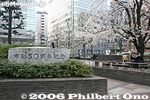
50th anniversary park
|
|

Musashimaru right after I shook his hand.
|
|

Asashoryu sips water offered by Ozeki ChiyotaikaiAs soon as Asashoryu entered the arena, many wrestlers went up to him to offer water as a show of respect.
|
|

Ishikawa-mon Gate 石川門
|
|

Sukiyashiki stone wall. Some markings are engraved on the stones. 数寄屋敷石垣
|
|

Ropes are strung over the tree to protect it against the weight of snow.
|
|
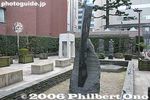
Sculptures
|
|

Taiko drum tower
|
|

Signboard for retirement ceremony at entrance.It reads "Musashimaru, Intai Danpatsu Hiroo Ozumo" which means "Musashimaru Topknot-Cutting and Retirement Sumo Exhibition."
|
|
|

Asashoryu and TochiazumaAfter offering water, Tochiazuma shares a laugh with the yokozuna.
|
|
|

JR Kanazawa Station JR金沢駅
|
|

Passing through Ishikawa-mon Gate 石川門
|
|

Gokuraku-bashi Bridge 極楽橋
|
|

Karasaki Pine Tree in Kenrokuen Garden 唐崎松
|
|

Sumo wrestler banners
|
|

Sando worship path to Taishakuten temple. Shibamata is in Tokyo's Katsushika Ward bordered by the Arakawa River in the west and by the Edogawa River in the east.
|
|

"Watakushi, umare mo sodachi mo Katsushika, Shibamata desu..." (I was born and raised in Shibamata, Katsushika Ward) If this opening line sounds familiar, you must be one of the many ardent fans of Tora-san movies.
|
|

Horyuji Station, under construction in Mar. 2007 法隆寺駅
|
|

"Does Tachikawa have strength?"
|
|

Japan's most famous temple, with the world's oldest wooden buildings (over 1,300 years old), is also the country's first World Heritage Site. Also called Ikaruga-dera, the temple is the headquarters of the Shotoku-shu Buddhist Sect. Path to
|
|

Musashigawa stablemaster (former Yokozuna Mienoumi) in the entrance hallInside the entrance hallway, there was a long table on the left side with ribbons which served as name tags for distinguished guests. Musashigawa is the name of Musashimaru's sumo stable.
|
|
|
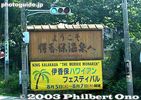
Ikaho is also a sister city of Hawaii island. During Aug. 5-7, 2003, Ikaho hosted the 7th King Kalakaua Merrie Monarch Hawaiian Festival featuring hula performances by numerous Japanese hula groups.
|
|
|

Stone walls seen from Gokuraku-bashi Bridge.
|
|

The Karasaki Pine Tree is the garden's largest pine tree.
|
|

The Tora-san "Otoko wa Tsurai Yo" (It's Tough Being a Man) movie series was played by the late Atsumi Kiyoshi. Tora-san is Japan's most lovable drifter and lovelorn on the silver screen. Forty-eight movies in this series were produced from 1969 to 1995. Katsushika-ku is where the Tora-san Museum is.
|
|
|

Horyuji Station platform
|
|

Admission charged. The 1,000 yen ticket gets you into the three major sights.
|
|

Sumo wrestler and sumo stable banners
|
|

Entrance hall is clogged up by a side show of hula.
|
|

Friends after allKyokushuzan chats with fellow Mongolian Asashoryu.
|
|

In the evenings, Hawaii's top hula halau (winner of the Merrie Monarch Festival in Hawaii) performed as the festival's main event. Photo: Flags of Hawaii and Ikaho town (merged with Shibukawa in 2006).
|
|
|
|

Sanjukken Nagaya Armory (closed) 三十間長屋
|
|

Karasaki Pine Tree in Kenrokuen Garden, Kanazawa, Ishikawa Pref.
|
|

Kokugikan
|
|

Statue of Tora-san in front of Shibamata Station. Posed like he's going to the station for another faraway trip...
|
|

Sando worship path to Taishakuten temple
|
|
|

Nandaimon Gate 南大門
|
|

Musashigawa Stable wrestlers greet visitorsIncludes Miyabiyama and Musoyama.
|
|

Practice
|
|
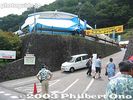
Town parking lot with a makeshift stage and main venue of the festival. The "Merrie Monarch" refers to King David Kalakaua who reigned over the Hawaiian Kingdom 1874-1891. He promoted hula in Hawaii as well as Japanese immigration to Hawaii.
|
|

Ishikawa-mon Gate looking from the inside. 石川門
|
|

Sanjukken Nagaya Armory (closed) 三十間長屋
|
|
|

Kokugikan ticket office (right). Ticket prices range from 2,100 yen to 14,300 yen.
|
|

This is a pose when Tora-san goes to the Shibamata Station and he looks back to his sister Sakura who calls him.
|
|

The path is lined with shops.
|
|

Bus stop in front of Horyuji Station. Takes you to the temple.
|
|

Horyuji temple, Nandaimon Gate, National Treasure 南大門(国宝)
|
|

In the entrance hall, hula and Hawaiian music direct from Hawaii
|
|
|
|
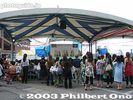
Canopy for the spectators fronting the main outdoor stage.
|
|

Ishikawa-mon Gate stone wall
|
|

Kurogane (Tetsu)-mon Gate stone walls. Entrance to Honmaru. 鉄門石垣
|
|

Horai island 蓬莱島
|
|

Kokugikan ticket office. Cheap tickets costing 2,100 yen are sold every day of the tournament, but sell out fast by noon or so.
|
|

The first Tora-san movie came out in 1969 and over 40 more installments have been produced since then. It is entered in the Guiness Book of World Records as being the movie series with the most sequels.
|
|

Tora-ya
|
|

Founded in 607 by Prince Shotoku Taishi, Horyuji is one of Japan's most famous temples, with the world's oldest wooden buildings (over 1,300 years old). Japan's first World Heritage Site.
|
|

The retirement ceremony had a lot of Hawaiian touches. This was only the beginning.Hula dancers and live Hawaiian band from Hawaii.
|
|
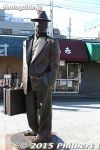
He will soon be accompanied by a statue of his sister Sakura.
|
|

Me next please!!!The winner gets to decide who to wrestle next. The rikishi all beg to be picked.
|
|

Main stage where many Japanese hula troupes performed during the day for three days. Free admission.
|
|

Ishikawa-mon Gate stone wall (different pattern from other wall).
|
|

Kurogane-mon Gate stone wall 鉄門石垣
|
|

Statue of Prince Yamato Takeru 日本武尊像(明治紀念之標)Memorial built in 1880 dedicated to the fallen warriors of Ishikawa Prefecture who fought in the Satsuma Rebellion.
|
|

Shibamata Station is on Keisei Kanamachi Line which runs between Kanamachi Station on the Japan Railways Joban Line (originating at Ueno Station) and Keisei Takasago Station on the Keisei Main Line coming from Keisei Ueno Station.
|
|

This is the shopping arcade which serves as the setting for the famous Tora-san movie series starring Atsumi Kiyoshi.
|
|

Also called Ikaruga-dera, the temple is the headquarters of the Shotoku-shu Buddhist Sect founded by Shotoku Taishi.
|
|

Gate to enter Kokugikan.
|
|

Konishiki also sings. (His company arranged the entertainment.)
|
|

Shibamata Station platform
|
|

The Bulgarian (Kotooshu) on the left
|
|
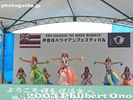
Tahitian dances were also performed.
|
|

Ishikawa-mon Gate 石川門
|
|

Kurogane-mon Gate stone wall 鉄門石垣
|
|

Statue of Prince Yamato Takeru 日本武尊像
|
|

At the gate, you might see a famous former wrestler (like former Takamiyama from Hawaii, now Stablemaster Azumazeki) taking your ticket.
|
|

Shibamata Station platform
|
|

When you get to Shibamata, don't expect the quiet shitamachi charm depicted in the Tora-san movies. Expect a lot of tourists instead, especially on weekends and holidays.
|
|

西院伽藍
|
|

Musashigawa Stable wrestler wearing Aloha-print yukataFlowery pattern (plumeria) with "Musashimaru" imprinted.
|
|
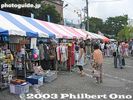
Hawaiian souvenirs for sale.
|
|

San-no-maru and Gojukken Nagaya long house and turrets in the distance.
|
|

Site of Inui Yagura Turret 戊亥櫓跡
|
|

Neagari-no-matsu Pine tree with rising roots. 根上松
|
|

Front of Kokugikan. The wide stairs make it quick for many people to exit the building. It is a sleek, modern building with a spacious interior. The roof collects rainwater for use in the toilets.
|
|

Shibamata Station
|
|

Fame has brought prosperity to the shops which line the mall leading to the Shibamata Taishakuten Temple. This shop, called Kameya Honpo, apparently served as the model for the Tora-ya dumpling shop.
|
|
|

Musashimaru souvenirs at the Kokugikan's souvenir shop
|
|
|
|

Shop called Toraya.
|
|
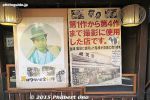
This shop was used in the early Tora-san films.
|
|
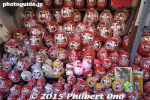
Daruma dolls
|
|

Ready to pounce on the winner
|
|
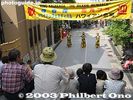
Ikaho is famous for the Stone Steps lined with shops. A section of it also served as a second hula stage during the day.
|
|
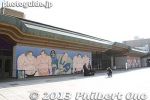
After you go through the ticket gate, the front of Kokugikan has two large murals.
|
|
|

View from Inui Yagura Turret
|
|

Neagari-no-matsu Pine tree with rising roots. 根上松
|
|

There are plans to build a statue of Sakura, Tora-san's sister, near this statue at Shibamata Station
|
|

The shop sells kusa dango (mugwort dumplings with real grass inside), the local specialty. Photo: Nitenmon Gate in view
|
|

Map of Horyuji. Large complex of buildings. Only two precincts are open to the public.
|
|

Musashimaru merchandise
|
|
|
|
|
|
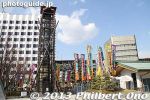
Taiko drum tower
|
|
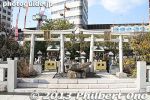
Two small shrines outside.
|
|
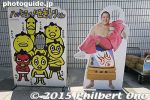
Pose with a cutout of popular rikishi Endo.
|
|

Pose with a cutout of popular rikishi Endo.
|
|
|

Hula on the Stone Steps 石段街
|
|
|

View from Inui Yagura Turret. Hashizumemon Gate on lower right.
|
|

Winter cherry blossoms.
|
|

Toward the end of the shop-lined mall, you will see this Nitenmon Gate of the Shibamata Taishakuten Temple, formally known as Daikyoji. 二天門
|
|

The plot is basically the same for each installment: middle-aged Kuruma Torajiro^ (Tora-san) meets pretty woman (the movie's leading lady whom the Japanese call the "madonna"), has a good time with her and falls in love. Photo: Tora-san Mus
|
|

Horyuji and World Heritage Site (Japan's first) marker
|
|

Musashimaru doll
|
|

Asashoryu joins in
|
|
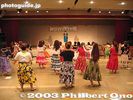
Hula workshops are also offered during the day at cost. A famous kumu hula teacher from Hawaii teaches the class.
|
|

Kanazawa Castle
|
|
|

Gardeners
|
|

Sumo wrestlers enter through a side entrance. Fans wait for their favorite wrestlers.
|
|

Wood carvings on Nitenmon Gate
|
|

He somehow always loses her much to the dismay of his married sister Sakura (played by Baisho Chieko) and adoptive uncle and aunt who run a small kusa dango (mugwort dumpling) shop in Shibamata.Photo: Tora-san Museum 寅さん記念館
|
|

Sai-in Garan West Precinct 西院伽藍
|
|
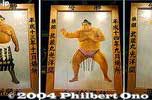
Giant painted pictures of Musashimaru decorating the arena inside. Each one commemorates a tournament victory.These giant pictures are actually black-and-white photographs taken in a photo studio and printed on large paper. Then it is hand-painted in color by a woman who has been doing it for years.
|
|
|

Other workshops are held such as ukulele lessons and a lei-making class.
|
|

Hashizume-mon Turret 橋爪門続櫓
|
|

Hashizumemon-tsuzuki Yagura Turret
|
|
|

Entrance lobby. At the end of the lobby is a trophy showcase. On the last day of the tournament, the tournament winner will walk through here to his car for a victory parade amid a large crowd.
|
|

This temple serves as a recurrent backdrop in the Tora-san series. The temple's priest is played by the humorous Ryu Chishu who actually came from a family of Buddhist priests. Photo: Bell tower
|
|

He is a drifter who travels extensively all over Japan and works as street vendor/hawker selling little trinkets and what not. Photo: The stripe pattern of the walls is the same as Tora-san's coat.
|
|

三経院 National Treasure
|
|

The ceremony opens with taiko drum beating on the sumo ring.
|
|

Both ozeki watch
|
|
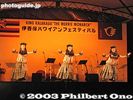
In the evenings, the overall winner of the annual Merrie Monarch Festival in Hawaii performed on stage. In 2003, it was Hula Halau 'O Kamuela from Oahu. They performed both the ancient hula kahiko dances (pictured here) and modern auana dances in Ikah
|
|

Gojukken Nagaya long house connected the two turrets on each end.
|
|

View from Inui Yagura Turret
|
|

Tiny pink flowers
|
|

Side of lobby. (Passing out free calendar posters during Jan. tourney.)
|
|

The Nitenmon Gate was completed in 1896 and features wooden statues of Zocho and Komoku, two of the four Devas which guard the four cardinal directions from demons.
|
|

He returns home to Shibamata every once in a while, usually at a most inopportune time for the family, and eventually leaves in disgrace after a family argument or lost love. Photo: Map of Japan marking all the prefectures where Tora-san was filmed.
|
|

Horyuji temple Five-Story Pagoda and Kondo Hall, National Treasures 五重塔 金堂
|
|

Sumo exhibition matches with lower division Makushita wrestlers.A retirement ceremony for an important sumo wrestler includes a variety of activities besides the actual ceremony of cutting away the topknot. It involves almost the entire Japan Sumo Association, and most wrestlers in the top three divisions (Makushita, Juryo, and Makunouchi) also appear in exhibition matches.
|
|
|
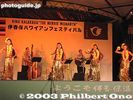
The Ikaho hula festival is officially sanctioned by The Merrie Monarch Festival, held in spring in Hilo, Hawaii. It is the most important and prestigious hula competition.
|
|

Hishi-yagura Turret 菱櫓
|
|

Inui Yagura Turret stone wall as seen from Hashizumemon-tsuzuki Yagura Turret.
|
|

Kasumigaike Pond
|
|

Sumo mural in lobby.
|
|

Founded in 1629 by a priest named Nitchu and his disciple Nichiei, the temple belongs to the Nichiren sect of Buddhism.
|
|

It is difficult to pinpoint exactly why the series is so popular and enduring. It's probably a combination of several elements. Photo: Summary of all movie installments
|
|
|

Makushita sumo matchLower-division wrestlers wear black belts, while the upper division wrestlers wear white belts (during practice) or colored belts during official matches.
|
|

In the entrance hall are life-size cutouts of the top wrestlers.
|
|
|
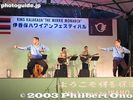
Hula is also performed by men. These photos were taken during the 7th Ikaho Hawaiian Festival (Aug. 5-7, 2003).
|
|

Hishi-yagura Turret 菱櫓
|
|

Magnificent tree
|
|

Karasaki Pine Tree
|
|

Trophy case in lobby. This is the Emperor's Cup awarded to the tournament winner.
|
|

The present Naiden (Inner Sanctuary) was completed in 1915. Keyaki (zelkova) was used for all the wood in the building. The present Haiden (Worship Hall) was completed in 1929. Photo: Taishaku-do Hall 帝釈堂
|
|

The hilarious humor of the characters, the heartwarming scenes, the shitamachi charm of Shibamata, the beautiful scenery and quaintness of the places Tora-san visits, the guest stars. Map of Japan marking all the prefectures where Tora-san was filmed.
|
|

Five-Story Pagoda and Kondo Hall, National Treasures 五重塔 金堂
|
|

Juryo Division dohyo-iri ring-entering ceremony
|
|

BreakAsashoryu took a water break between each practice bout.
|
|
|
|
|

Honmaru, the castle's center now covered with vegetation. 本丸
|
|
|

Emperor's Cup. This is what all sumo wrestlers dream about.
|
|

Taishakuten is the god Indra from Brahmanism, a Hindu religion. Being the god of rain and thunder, Indra was a powerful warrior god that was adopted by Buddhism as a protector. Photo: Glass wall protecting the exterior of Taishaku-do Hall.
|
|

Atsumi Kiyoshi who seems to have been born to play Tora-san. (Atsumi never seemed to age even after over 20 years in the role. Tora-san's carefree, happy-go-lucky lifestyle also appeals to many. Photo: Sculpture of Tora-san's famous hat and bag.
|
|
|

Juryo sumo match
|
|
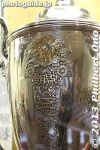
Closeup of Emperor's Cup.
|
|

I'm waiting...
|
|
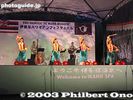
They wore a variety of colorful costumes and used various hula instruments such as these frayed bamboo sticks called Pūʻili.
|
|
|
|

Site of Ushitora Yagura Turret. 丑寅櫓跡
|
|

Natural fountain and source of Kasumigaike Pond's water.
|
|

Statue of Hijikata Toshizo from Shinsengumi. 土方歳三像
|
|

Nameplates of tournament winners on Emperor's Cup
|
|

It was believed that Indra would step in and chase away the demons causing calamities to the followers of Buddhism. Photo: Wood Carving Gallery (admission charged)
|
|

Sculpture of Tora-san's famous hat and bag
|
|

Goju-no-To (Five-Story Pagoda), National Treasure, Horyuji. The size of the roof gets smaller toward the top of the structure. 五重塔 仏舎利
|
|

Hairdressing demonstration
|
|
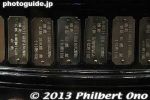
Closeup of nameplates of tournament winners on Emperor's Cup.
|
|

Old Nameplates of tournament winners that were on the Emperor's Cup.
|
|
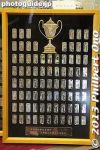
Old Nameplates of tournament winners that were on the Emperor's Cup.
|
|
| 3210 files on 13 page(s) |
1 |
 |
 |
 |
 |
|